Today’s round-up is full of great weather science experiments and investigation ideas. Learn about extreme weather with a tornado in a jar, record rainfall over a period of time, create a water cycle in a bag and lots more easy ideas for learning about the weather.
Observing the weather is a great way to practice recording and displaying data and learning about the weather and how it changes daily.
Weather Science Experiments
How to measure rainfall
A simple rain gauge is an easy way to measure rainfall. Don’t forget to record the results and empty it each day. Use my free rainfall recording sheet, or design your own!
Find out how hard it’s raining with Rainy Day Mum.
Wind Experiments
If you want to get crafty, try making a pinwheel like this one from Red Ted Art. You should find it spins more on windy days.
Inspiration Laboratories makes an excellent model hurricane.
Find out which direction the wind is moving in with my easy homemade wind vane.
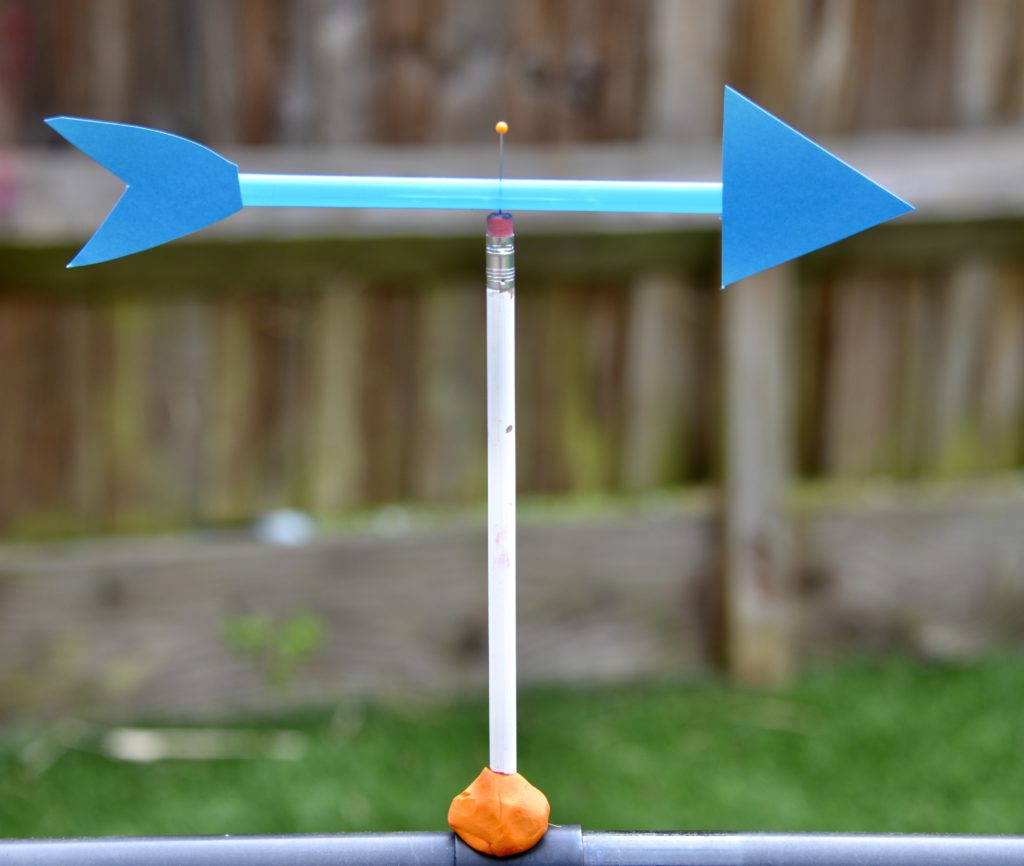
Storm in a Jar
We made a storm in a jar to demonstrate storms on Jupiter in This Is Rocket Science.
Did you know that there are over 1000 tornados in the United States annually?
I’ll blow your house down
Can you blow down the Three Little Pigs House? Or build the pigs a house that won’t fall down?
Build your own anemometer to measure wind speed.
Did you know the effects of increasing wind speed are measured on the Beaufort scale?
Water Cycle Investigations
This fun mini water cycle is a great way to illustrate the water cycle.
We love this LEGO water cycle model from Edventures too.
Find out how water evaporates in this easy activity using sand.
Set up a water cycle in a bag!
Homemade Weather Station
Did you know you can make a straightforward weather station using pinecones? This is a great science activity for young children who can easily apply the knowledge when they see pinecones outside too.
More weather science for kids
Make a simple barometer to measure air pressure. A homemade barometer is a great way to learn about air pressure visually.
Creative Family Fun has some lovely sun prints that are an excellent weather activity for a sunny day.
These weather sensory bottles would be great for younger children from Twodaloo.
Find out how clouds form an easy rain cloud in a jar demonstration.
Can you think of any more weather science themed activities?
Why is the sky blue?
When light from the Sun enters the atmosphere, it contains all the colours of the rainbow, which appear as white light. Gases in the atmosphere make the light slow down, change direction and scatter. Blue light is scattered the most, which is why we see the sky as blue.
What makes a rainbow?
It is the refraction of light which makes the sky look blue. Rainbows are formed in a similar way, except its rain or another water source ( you can demonstrate this with a hosepipe ) which makes the light we see to be split up into its constituent colours.
We only see rainbows when the Sun is behind us, with water droplets falling in front. You can make a rainbow with a prism or with a hosepipe by standing with your back to the Sun and spraying water into the air.
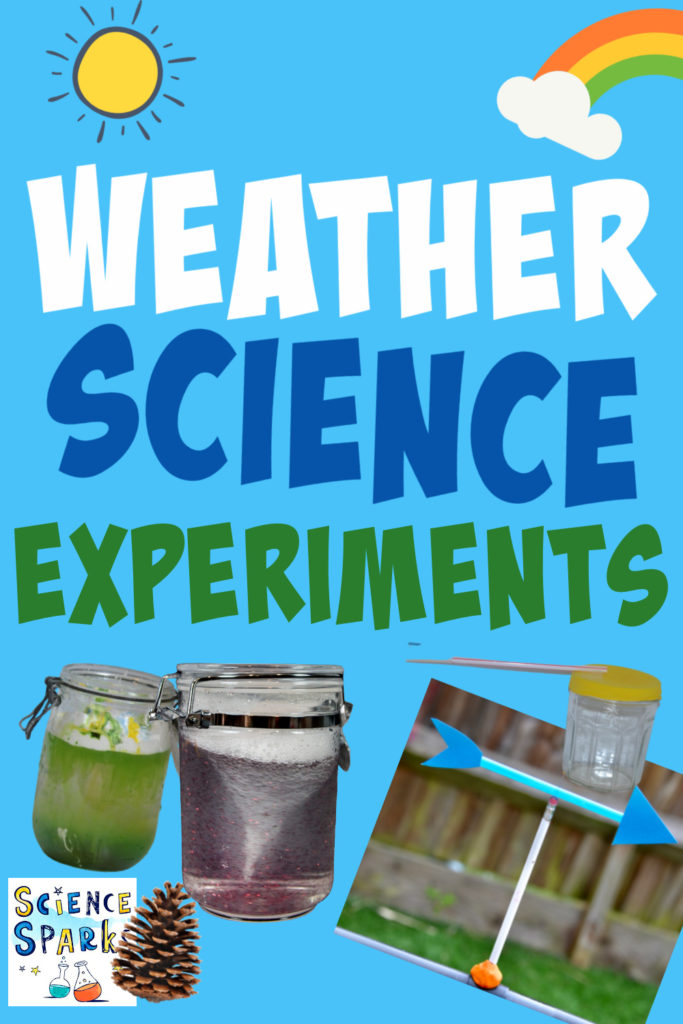
Last Updated on January 26, 2023 by Emma Vanstone

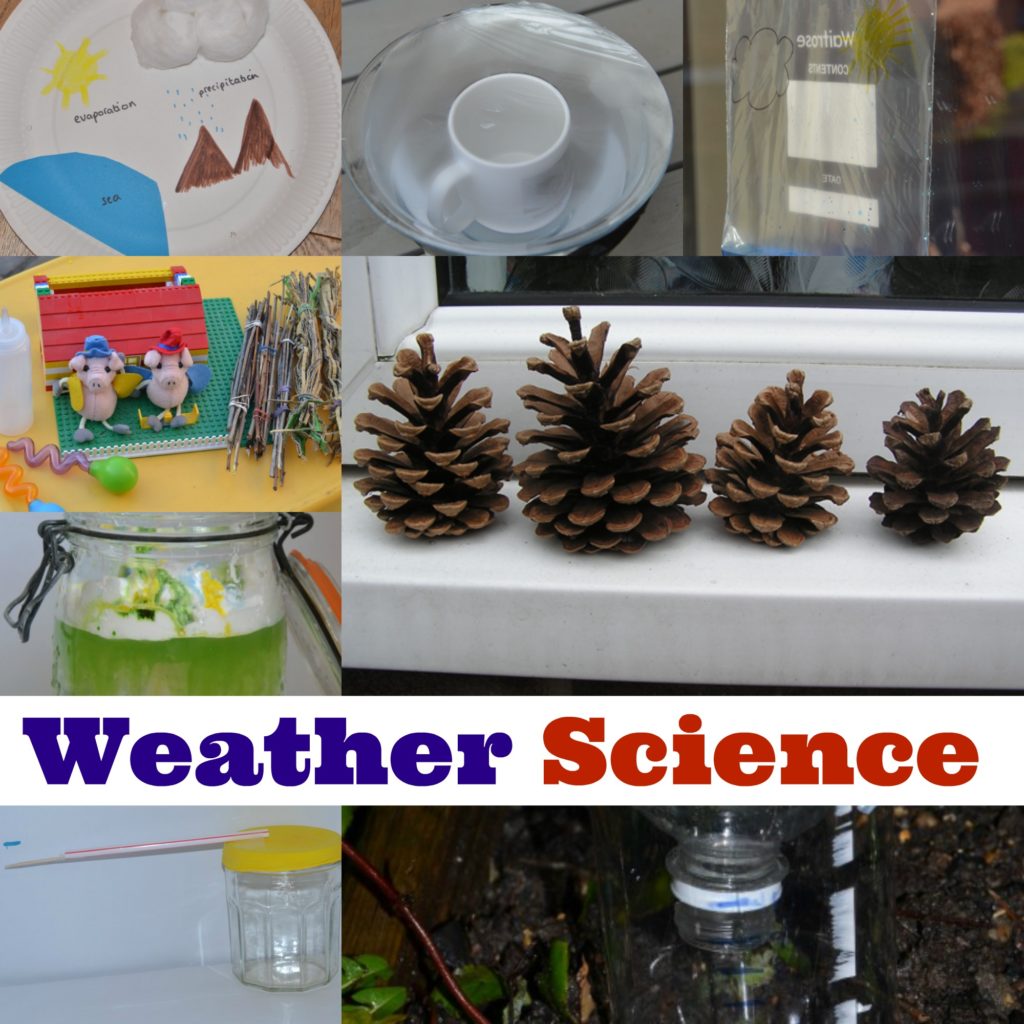
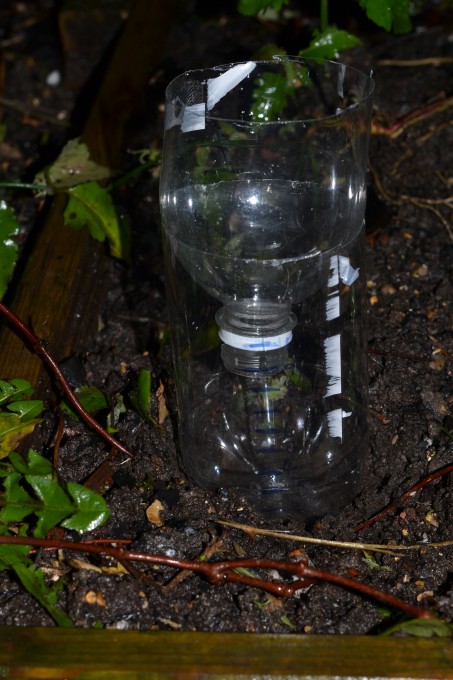
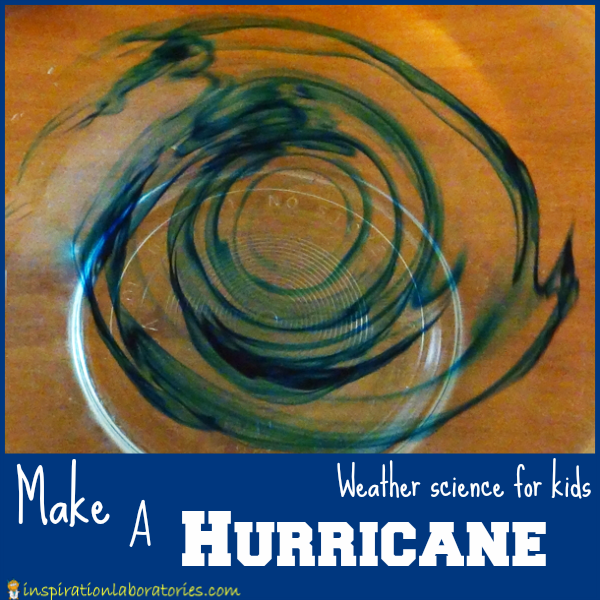
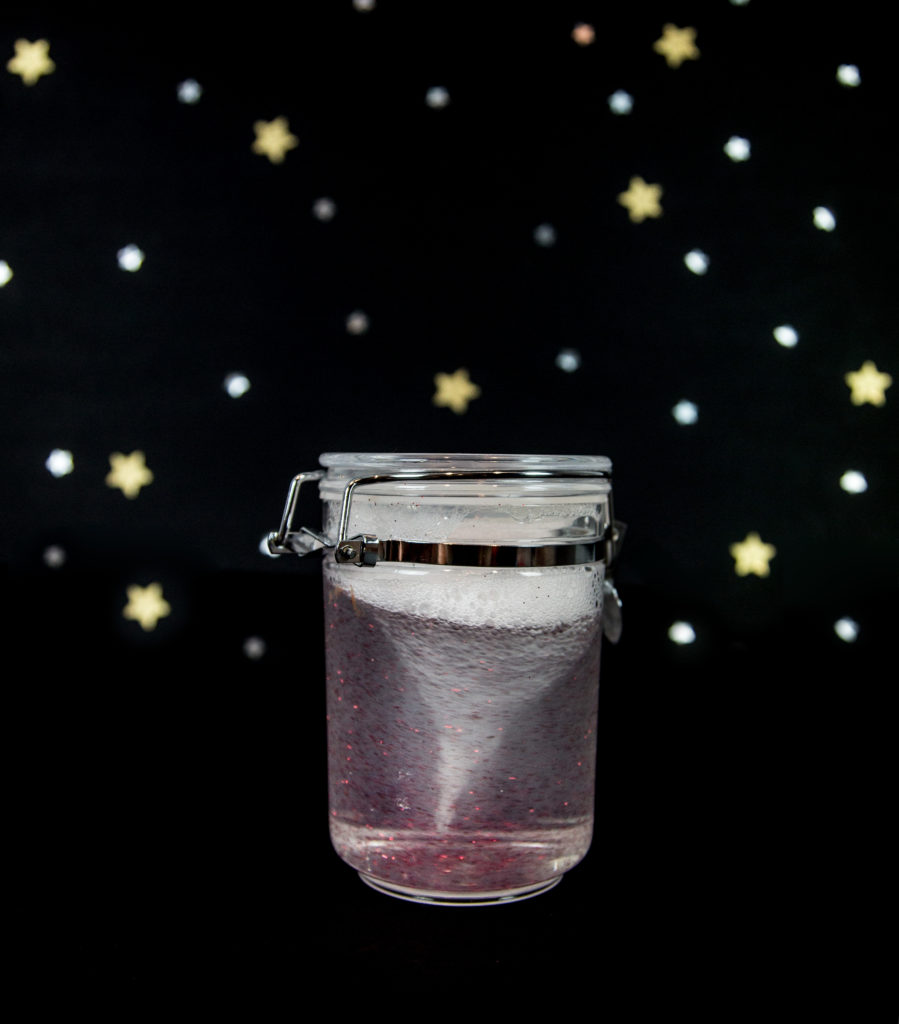
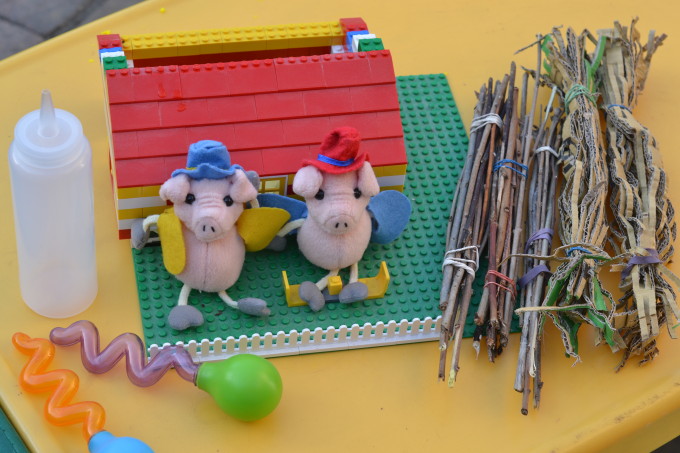
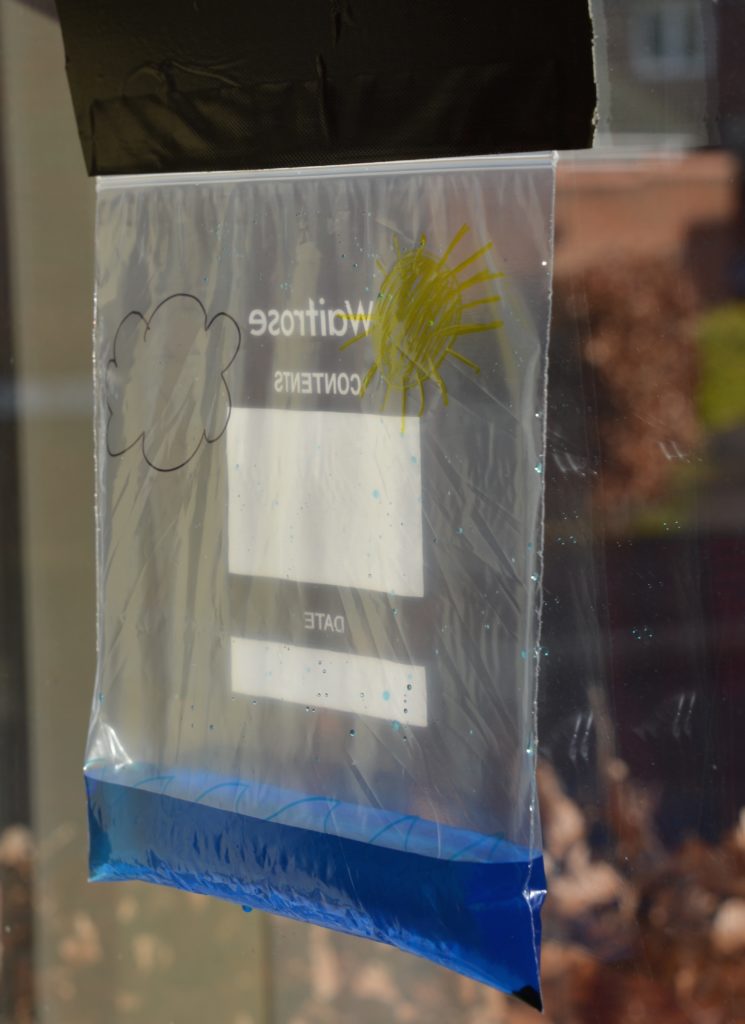
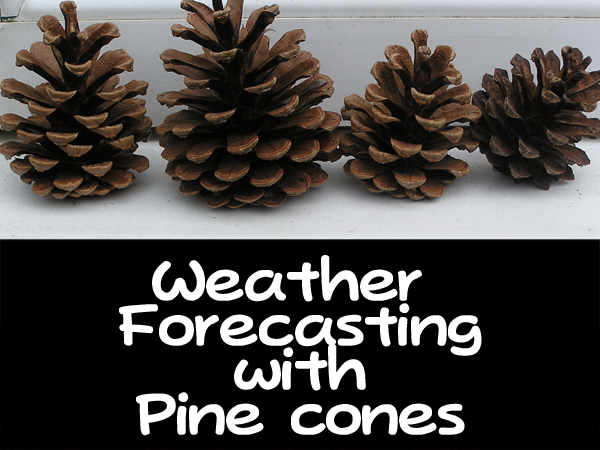
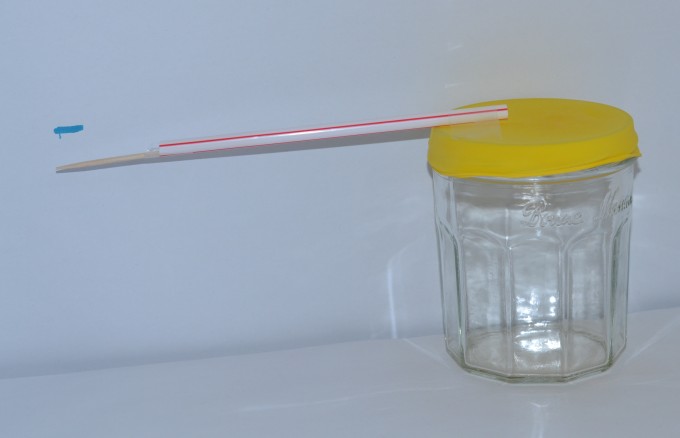
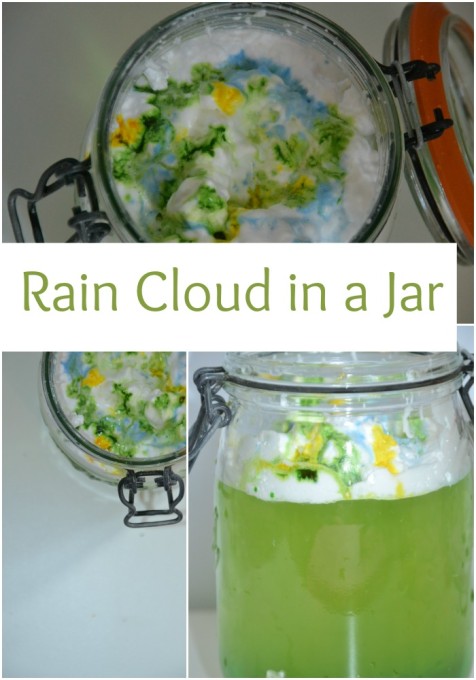



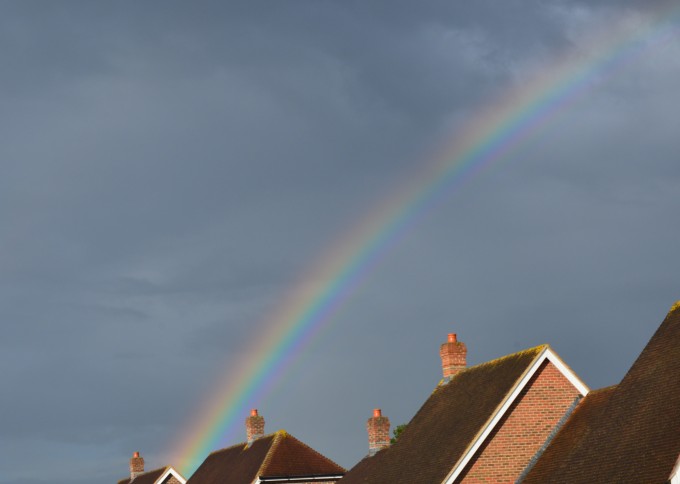
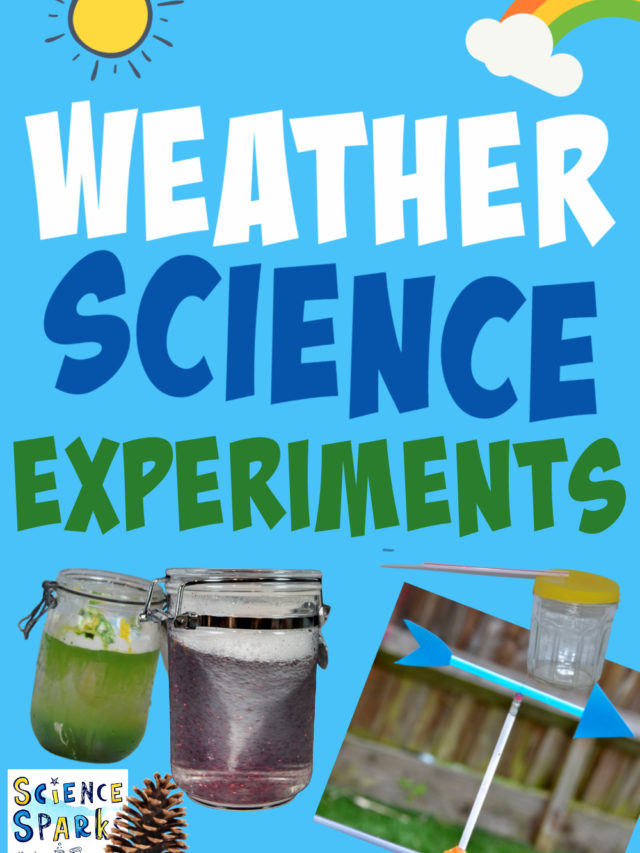
Love the “make a hurricane” idea!